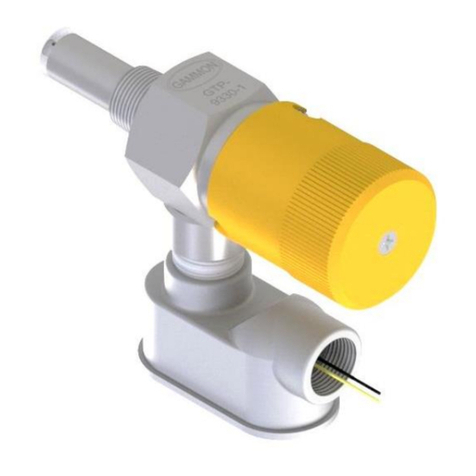MENU OPTIONS
The Zero Set option will zero or calibrate the
instrument to water.
This function is not yet available.
This option allows you to turn the LCD
display backlight on or off. The options are
“Yes” and “No.”
Follow the prompts to select the display
language from the five options and press
<GO> to set.
AUTO TEMPERATURE COMPENSATION
The speed of light in a liquid increases as temperature
increases, and the refractive index, therefore, decreases.
Automatic temperature compensation ensures that
concentration readings of aqueous (water-based) solutions
will be accurate with respect to the sample’s temperature.
Samples should be read at an ambient temperature as close
to 20°C (68°F) as possible for the best precision. Scales are
programmed with temperature compensation specific to an
individual unit of measure. This will be noted on the
specification card accompanying the instrument.
For the most accurate possible results, the instrument, the
ambient temperature, and the fluid should be in equilibrium
with the instrument’s temperature range.
CARE AND MAINTENANCE
Keep the measuring surface clean! It is extremely important
to thoroughly clean the measuring surface after each use
with a wet, soft, clean cloth or paper towel. This will prevent
cross-contamination between samples and provide accurate
subsequent readings. Keep the measuring surface clean
and free of residue at all times. The instrument body may be
cleaned with a soft, clean cloth or paper towel, dampened
with a mild liquid dish soap and water. The use of solvents or
petroleum-based cleaners is not recommended.
TROUBLESHOOTING
The most common source of error is trying to take readings
with the cover open. If this is not the case, and you suspect
the instrument is malfunctioning or giving an erroneous
reading, try calibrating it and take a reading of water to check
the zero set. If the instrument readings are still suspicious,
replace the battery and repeat the above procedure.
If the instrument “locks up” and will not read or shut off, clear
the instrument by removing the batteries. If the unit fails to
display “GAMMON/PALM ABBE II” when starting, check the
battery insertion and polarity. If the unit still will not start,
check the battery charge and/or replace the batteries. If
batteries are good and instrument still will not start, call GTP
for support.
Sample was not detected on prism.
Cover must be closed before taking
reading.
Temperature out of range - too high (+) or
too low (-)
TROUBLESHOOTING (continued)
Concentration out of range - too high (+) or
too low (-)
Time to change the batteries.
SPECIFICATIONS
▪ This refractometer only measures DiEGME in fuel using
the ASTM D5006 test procedure.
▪ Power supply: 2 AAA batteries
▪ Battery life: ~3,500+ readings
▪ Dimensions: 145 x 75 x 37 mm (5.7 x 2.95 x 1.46 in)
▪ Weight: 250 grams (8.8 oz)
▪ Languages: 5 languages - English, French, Spanish,
German, and Russian
▪ Minimum sample volume: 0.3 mL
PARTS LIST
SC-B/2HB-CD-2 Complete kit: 18"x13"x6", ID
molded black ABS carrying case,
nickeled hardware, locks and keys;
the refractometer and ancillary
equipment listed below
SC-B/2-CA Carrying case only, as described
above, pocketed with foam insert
SC-B/2HB-2D-2 Refractometer only
ANCILLARY EQUIPMENT
SC-B/2-F1 Funnel, separatory, polypropylene
250 mL
SC-B/2-SB1 Ring stand
SC-B/2-D1 Dishes, aluminum foil (100 ct. per
tube)
SC-B/2-P1 Pipet tes, pi s ton sty le (3mL ,
6 per kit)
SC-B/2-B2 Bottle, polypropylene, 60mL (with
screw cap)
SC-B/2-G1 Graduated cylinder
No Sample
Detected
Close Cover
Press [GO]
Out of Range
Temp +
Sample out
of Range +
Warning!
Low Battery
Set Zero ?
[GO] to Set
Set Span ?
[GO] to Set
LCD Light?
[GO] Yes
Language?
[GO] to Set
GAMMON TECHNICAL PRODUCTS, INC.
P.O. BOX 400 MANASQUAN, N.J. 08736 USA
PHONE
FAX
EMAIL
WEBSITE
STORE
732-223-4600
732-223-5778
www.gammontech.com
www.gammontechstore.com




















